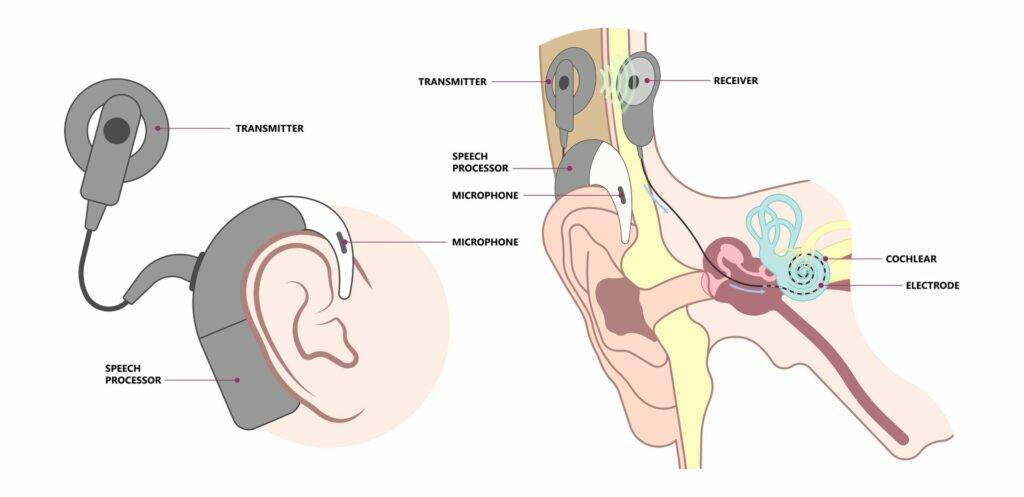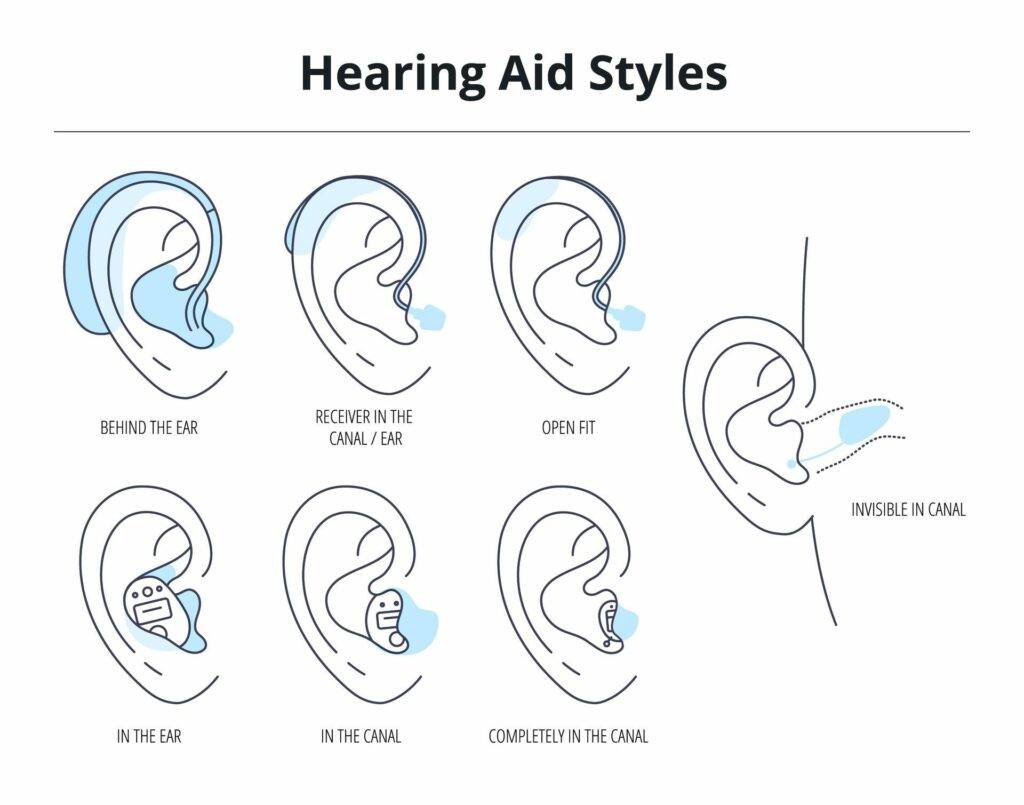If you have been diagnosed with hearing loss, you may have been given two options to help you hear again; a cochlear implant and a hearing aid.
The suitability of these treatment options often varies based on several factors, including benefits, limitations, cost, and availability. In this article, we explore the differences between a cochlear implant and a hearing aid so that you can decide what’s best.
What is a Cochlear Implant?

A cochlear implant is a complex medical device that helps its wearer to hear better with an improved sense of sound. It must be surgically implanted by medical professionals, bypassing the damaged portion of the inner ear to stimulate the auditory nerve.
The implant consists of two parts: an external component that houses a microphone, speech processor, and transmitter, and an internal component that contains a receiver and an electrode which are surgically implanted in the inner ear.
Coupled with a strong magnet, the implant transmits sound sources from the microphone and speech processor to the receiver, which then converts it to electrical pulses and relays it to the electrodes, stimulating the auditory nerve to process the sound.
Benefits of a Cochlear Implant
Cochlear implants are best suited for people with profound to severe hearing loss in both ears. Here’s how:
Improved Sound Quality
When your hearing loss stems from the inner ear or hearing nerve, a cochlear implant helps you to listen differently. The implant translates sound sources into electrical signals, allowing you to hear better.
Better Speech Understanding
As the implant gathers the sound and transmits it to the electrodes, stimulating the auditory nerve, your brain will then receive the signals to process the sounds. This allows you to understand other sounds in your surroundings and speech.
Greater Reliability
When fitted with a cochlear implant from a young age, you experience better exposure to sounds during an optimal period to develop your speech and language skills. Likewise, adults can also associate the signals with the sounds they remember.
Limitations of a Cochlear Implant
Like most medical devices, a cochlear implant also has its limitations. This includes:
Limited Functionality
The implant requires two components coupled together by a strong magnet to work. Without the component or the magnet, the implant provides limited functions to the wearer, thus limiting its usability.
Maintenance and Repairs
Depending on the quality of your cochlear implant, maintenance and repairs can be costly. In some cases, you may need another surgery to ensure that the implant is functioning well within its capacity.
Invasive Procedure
When you have moderate to profound hearing loss in both ears, hearing aids may not be enough to help. Thus, you will need a cochlear implant which must be surgically implanted to bypass the damaged portion of your inner ear to stimulate the auditory nerve.
What are Hearing Aids?

Different from cochlear implants, hearing aids are removable electronic devices specially designed to amplify the sounds going into the ear. They are generally prescribed by hearing healthcare professionals to ensure optimum functionality for the wearer.
There are two main types of hearing aids; in-the-ear (ITE) and behind-the-ear (BTE) models, each available in various styles, shapes, sizes, and colours. With technological developments, hearing aids are getting smaller yet more powerful, allowing you to hear better.
All digital hearing aids contain at least a microphone to pick up sound, a computer chip to amplify and process the sounds, a speaker that transmits the signals to your ear, and a battery to power your hearing aid.
Benefits of Hearing Aids
Hearing aids are best suited for people with mild to moderate hearing loss. Powerful hearing aids are also available for people with severe hearing loss. Here’s how:
Non-Invasive Procedure
Different from cochlear implants, which require surgical implantation, there’s no surgery involved in fitting a hearing aid to your ear. It only requires you to undergo a fitting session with your hearing healthcare professional to ensure an optimum fit.
More Convenient to Use
As hearing aids are removable, they can be fitted and taken out of the ear canal by the user when not in use. This makes hearing aids more convenient to use. At the same time, it provides an extension of connection to the world around you.
More Affordable
Depending on the technology used to optimise your hearing aid, the cost of affording one is more affordable than a cochlear implant. This is because there are two subsidies in Singapore that help to make hearing aids more affordable.
Limitations of Hearing Aids
Like any electronic device, hearing aids also have their limitations. These include:
Background Noise Interference
Depending on the quality of your hearing aid, you may experience background noise interference which can distort your hearing experience. In some cases, it might cause unwanted noises.
Limited Efficacy
Hearing aids work to amplify sounds by specific frequencies. If the amplification is insufficient, you might have trouble hearing and require further optimisation. In some cases, a cochlear implant may be recommended to help you hear better.
Visibility
While hearing aids are getting smaller yet more powerful, the possibility of losing your hearing aid remains high. This is especially if you’re active in sports or perform labour-intensive work. Seniors also have a higher tendency to lose their hearing aids over time.
Final Thoughts
While both hearing devices provide improved hearing to their users, they differ in ways that we have elaborated above. Their suitability also varies based on the person’s degree of hearing loss, listening environment, communication requirement, and individual concerns.
To learn more about hearing solutions that are available and suitable for you, consult a hearing care professional like The Hearing Room to learn about your options.


 The Hearing Room
The Hearing Room